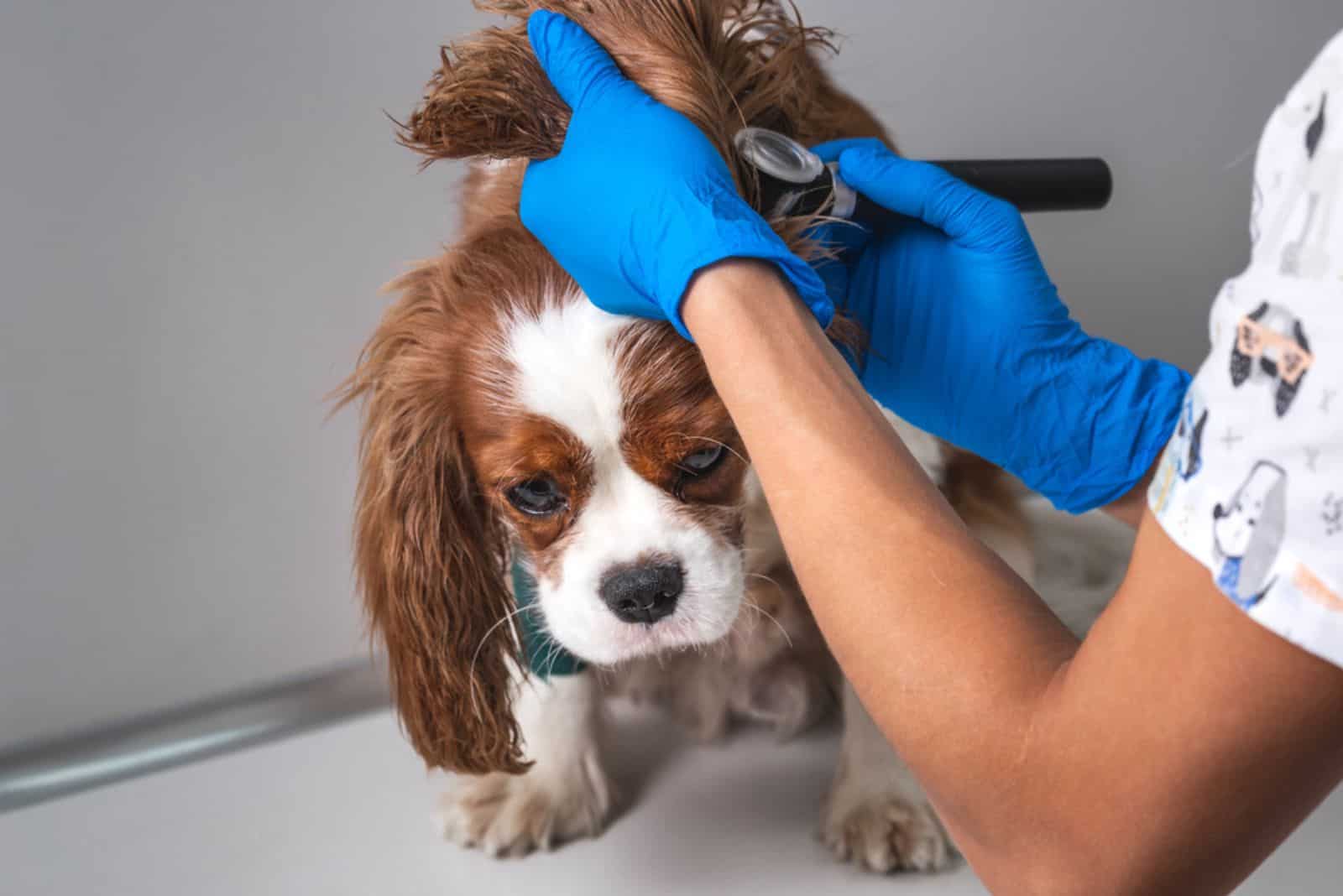How to treat dog ear hematoma at home?
Now, that’s a question you’ve never asked dr. Google before!
Dog ear hematomas are one of the most common ear problems, especially if you have a floppy-eared buddy. Your dog’s head is a sensitive and tricky thing. So, many issues can strike it: from tiny inflammations to scary, big, aural hematomas.
While some health problems can be solved at home, there are others that really can’t be treated in the comfort of your living room. Sure, there are ways to relieve the pain and discomfort before you run your pup to the vet.
If you’re interested in seeing which home treatments could help a bit with aural hematomas, stay tuned.
How To Treat Dog Ear Hematoma At Home?
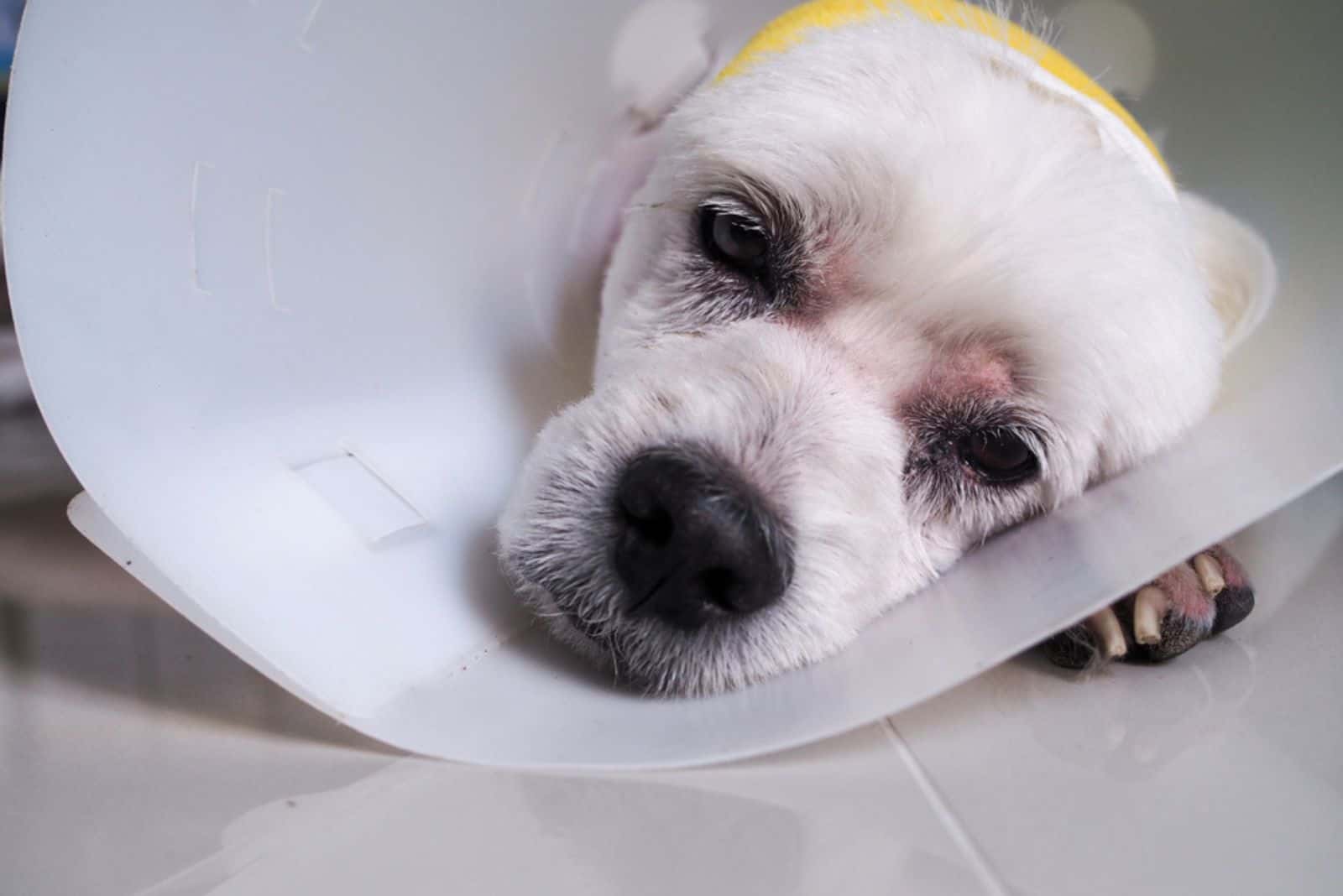
Before we dig into the matter, I want you to understand that draining aural hematoma at home is not advisable. You should definitely go see your vet if things get too difficult to handle.
Many inexperienced dog owners will be tempted to pick a needle and try to burst the hematoma, but that could only make things worse. Draining it at home will cause your dog a tremendous amount of pain, and most certainly cause an infection.
Try natural remedies instead. The best natural solutions are right down below!
Witch Hazel
Applying balm or oil made of witch hazel can help a lot to ease the discomfort and reduce the inflammation of the hematoma. Aural hematomas are quite painful, and every time your dog’s ear flaps or moves around, it will cause pain.
Hazel balms will reduce the pain and cause the inflamed blood vessels to shrink. The pores of the affected ear will also shrink, and the balm will have a numbing effect.
Every dog owner should have witch hazel balm at home to help with itchiness, inflammation, swelling, burns, etc.
Arnica
If your dog suffers from simple hematomas, there’s a plant that might help like no other. It’s called arnica, and it’s from Europe. The many benefits of this plant are widely known.
Arnica oil will make the blood reabsorb faster, and thus, heal hematomas. Also, it will remove any bruising your dog has caused by ear scratching, and reduce the swelling.
You can use this oil to massage small hematomas, but don’t press it too hard.
Yarrow
Yarrow is another plant that helps with issues like hematoma.
You’ve probably seen this plant with hundreds of tiny white floretes. But, did you know that yarrow oil can make capillary walls stronger?
Massage it into the skin of your dog’s ear to stimulate small hematoma disappearance.
Leeches
Okay… technically, you shouldn’t do this without your vet’s supervision, but we can still consider this a home remedy because there’s no surgical procedure involved.
I kid you not – leeches can help with old, hard hematomas!
These little blood-sucking beasts have perfectly-designed anatomy to cling onto your dog’s ear and draw blood. But, that’s not all these little creatures do. Their saliva also helps with clotting, and reduces scar tissue formation. The less scar tissue there is, the less chance of your dog getting a cauliflower ear.
If a dog has a leach stuck onto his ear, not only will it get rid of the hematoma fast, but there will be no consequences and no recurring hematomas.
The sole fact that leeches are considered medical devices says enough about their usefulness.
Compresses
Compresses (or compression wraps) are helpful in some cases, but most dogs can’t stand having their ears tied down to their head. Compresses work to reduce the movement of the ear flap. The ears are snuggly pressed onto the head, avoiding any movement that could trigger itchiness or pain.
Before you visit the vet, I recommend you use compresses only if you don’t have any other option. They’re nowhere near as helpful as balms or surgical procedures.
What Is Dog Ear Hematoma, And Why Does It Occur?
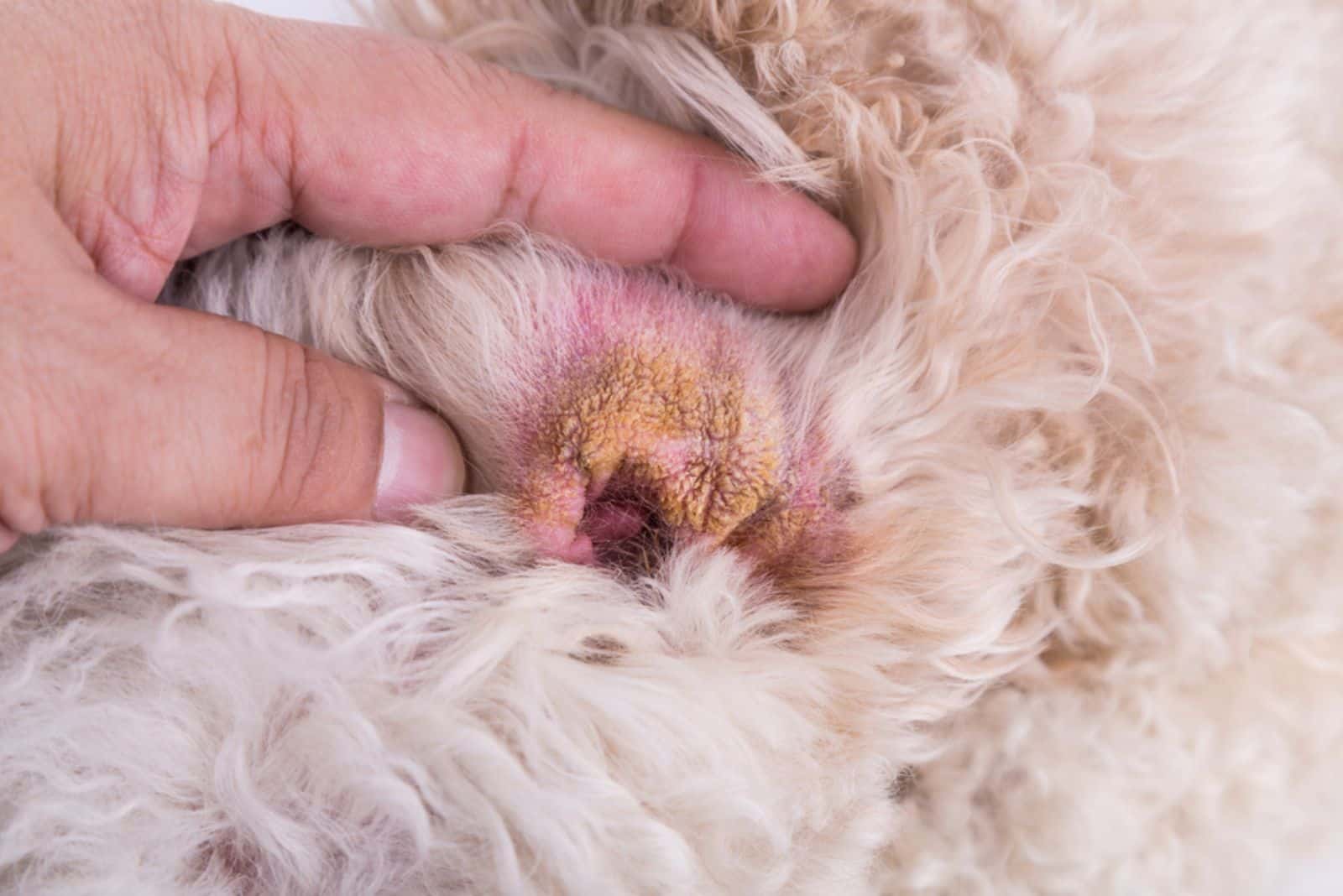
In order to learn how to treat dog ear hematoma at home, we must understand what hematomas are, and why they happen. Believe it or not, dog ear hematomas happen for multiple reasons.
An aural hematoma is an accumulation of blood outside the blood vessels. Naturally, this occurs on one of both ears of the affected dog, depending on its cause. Aural hematomas normally affect only the outer ear. The blood becomes trapped between the layer of skin and the cartilage.
Some people also call these blood blisters because they truly resemble blisters filled with blood. After all, it is a skin pocket packed with broken blood vessels and their blood.
When I mentioned that ear hematomas normally occur on outer ears, I didn’t mention that some of them may affect the inner ear, too. You see, hematomas vary in size. Some are small and not too problematic, while others can become so large they block the ear canal.
Such hematomas will affect the dog’s ability to hear, they will cause the ear to stand out awkwardly, and they will bother your dog.
Outer ear hematomas can either be spongy or resemble water balloons. The ear flap will have a noticeable mass that may seem like it will burst. However, no matter how big they are, aural hematomas rarely burst on their own. Still, that doesn’t mean you shouldn’t treat them.
Now that you know what ear hematomas are, you should know why they happen. Here are several causes of ear hematomas. These might help you figure out why your dog has hematomas, but your vet will certainly know what’s wrong.
Trauma
Excessive scratching or shaking of the head might be traumatic for your dog. If it persists, your dog’s ears will certainly develop one or more hematomas.
Trauma doesn’t mean your dog was involved in a severe accident or that he suffered mistreatment. Head shaking can also be a mild trauma that could cause aural hematomas. Watch out so your dog doesn’t shake or scratch his ears all the time.
Trauma hematomas, in this case, can be prevented.
Allergic Reactions
Unfortunately, allergies are one of the biggest underlying causes of many issues, including aural hematomas. They can either be environmental or food-related. Still, all of them can cause tremendous issues.
Skin allergy symptoms include lots of signs such as itchiness, dry skin, red eyes, sore throat, hair loss, ear infections, etc. Your vet will test for allergies.
For example, if your dog has dry or itchy skin on his ears, he will scratch them a lot, and possibly develop a hematoma, just like the one we discussed in the trauma section.
It’s good to know that antihistamines we normally use don’t work on dogs, so try to find a more natural approach for dealing with allergies.
Ear Infections
Dogs with pointy ears are always in demand, Why is that so? Because they’re not as prone to dog ear infections as their floppy-ear buddies.
Dogs with floppy ears are the target group for ear infections. The ear is a warm and dark place where bacteria can grow as much as it wants. And, trust me… it develops very fast causing painful infections!
This is exactly why you should always clean your dog’s ears and check them regularly. The first sign of redness or swelling should alarm you to contact the vet and ask for assistance.
Your vet will use an otoscope to check out the inside of the ear for possible foreign objects. Then, he might use a swab stick to take a bit of the culture found in the ear, just to check for infections.
If there really turns out to be an underlying infection, your vet will prescribe medications that will help battle the infection, such as steroids and antibiotics. However, you must change your way of grooming and prevent such things from happening again.
Parasites
Are you aware of how dangerous a small tick could be for your dog? More than once I’ve heard of cases where the late-spotted tick and his infections were the cause of death for many dogs. It’s sad and scary, but it doesn’t have to be.
Every dog owner must be ready to skim through their dog’s coat once he’s back from a daily walk, especially if it’s in a forest. Ticks are so light that they can be carried through the air, so always keep your eye out for them.
The good news is that you can spot and remove the tick easily, and the swelling should also go away fast. However, I recommend you arrange a checkup with your vet, and have him run some blood work because ticks are carriers of the terrible lyme disease.
What’s a tad bit worse than ticks? Ear mites! Eww…
These nasty creatures are difficult to spot at first because they’re super small. Still, you can figure out it’s them causing the hematoma because your pup will also have a foul odor coming from his ear canal, and also a dark discharge.
Unfortunately, dogs with floppy ears are super prone to getting ear mites, which are difficult to shake off.
Symptoms Of Ear Hematomas

Symptoms of ear hematomas are pretty obvious. They’re also quite simple.
If your dog is prone to ear hematomas, or you suspect he has one because his ear is a bit weird, then you should always keep in mind the following symptoms:
– swollen ear flap (or pinna)
– pinna is also warm to touch, contrasting to common cold ear conditions
– foul odor and discharge coming from the affected ear
– scratching and shaking the head
– tilting the head to one side
Is Ear Hematoma Painful For My Dog?
The size of the hematoma plays a major role in whether it’s painful for your dog or not. Small hematomas aren’t usually too problematic, and thus, they don’t cause so much pain. However, the bigger the hematoma is, the more pain your dog will experience.
The simple answer is: yes, hematomas are painful for your dog.
You should be extra careful while handling it. If you don’t want to treat it at home, then don’t even touch it. Of course, prevent your dog from touching the mass, too. Aural hematomas can also be itchy, and most likely, your dog will accidentally hurt himself while trying to scratch that itch.
As one of the most helpful non-surgical treatments, Elizabethan collars (or cones) will prevent your dog from hurting himself. I know it’s a real cone of shame, but in this case, it’s a cone that helps. I recommend you always have a cone ready for similar situations.
Painful hematomas are always big hematomas, and as such, they won’t reabsorb as quickly as smaller hematomas. They require veterinary help, and should not be left unattended.
Lastly, large hematomas can block ear canals, cause infections, and lead your pup into even more discomfort.
What Do You Do With Large Hematomas?
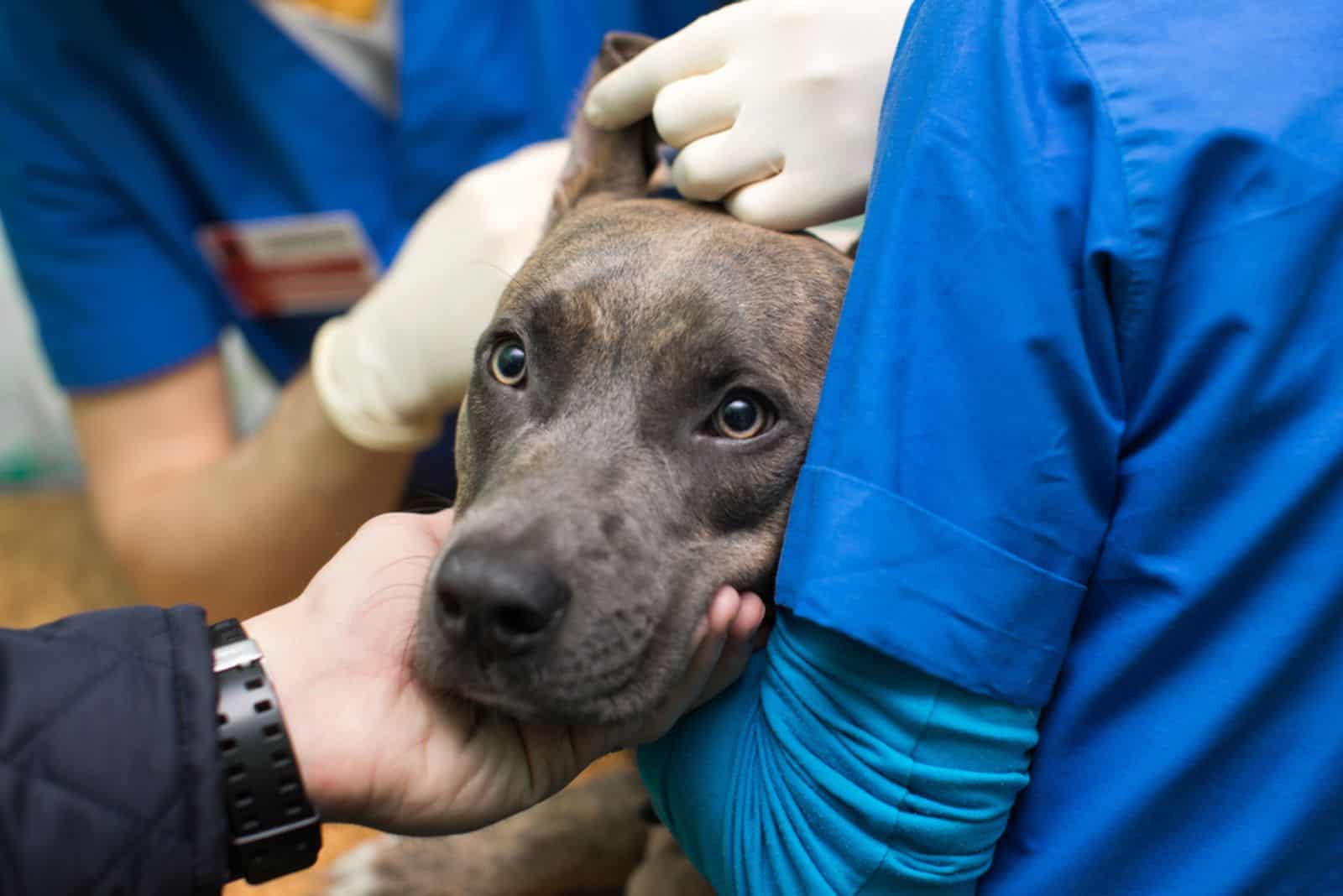
Taking your dog to the vet is the only logical step to take after noticing your dog has a large hematoma. But, what will happen next? What will the vet do? Is your dog supposed to go on a surgical treatment option or will the vet solve the issue right there before you.
Hematomas that require veterinary help usually end with drainage and sutures. However, this is a rather invasive option, and as such, many dog owners will try to avoid it. There are other methods (less invasive ones) that will help get rid of the hematoma.
A brief relief may come after a process called aspiration. Simply put, the vet will make a small incision and use a syringe to drain the accumulated blood. Still, this is not a long-term solution, and you should consider alternative methods if the blood blister comes back.
Vets will recommend you try a teat cannula or a vacuum cleaner. Both are quite effective.
The teat cannula is a small cannula that will help with the drainage of the hematoma. It goes a bit slower than actual drainage with a syringe, so you’ll have to be careful that your dog doesn’t scratch it off.
The vacutainer is a small device that creates vacuum and removes the accumulated blood, making sure the cartilage and the skin are brought close together so the wound heals. The only issue with the vacutainer is that you’ll have to empty and clean the device as it fills up.
Which Home Remedy Should I Avoid?
This is not really a home remedy, but more of a procedure that you should always avoid doing at home.
I’ve already mentioned that you must never drain your dog’s hematoma at home. So, avoid using sharp objects, needles, scalpels, scissors, and such to penetrate through your dog’s skin and drain the hematoma.
Bursting the hematoma at home by using the mentioned objects will make your dog bleed more than he’s supposed to. Your pup will be in pain, and the open tissue will be an open invitation to all possible infections.
Veterinarians will use sterile instruments to drain your dog’s hematoma.
Another thing you should avoid is giving your dog medications that he should not be taking. Let your vet decide what your dog should take. Human medications like painkillers don’t work on dogs. As a matter of fact, some human medications, like Tylenol, can be fatal for dogs.
When Should I Take My Dog To The Vet?
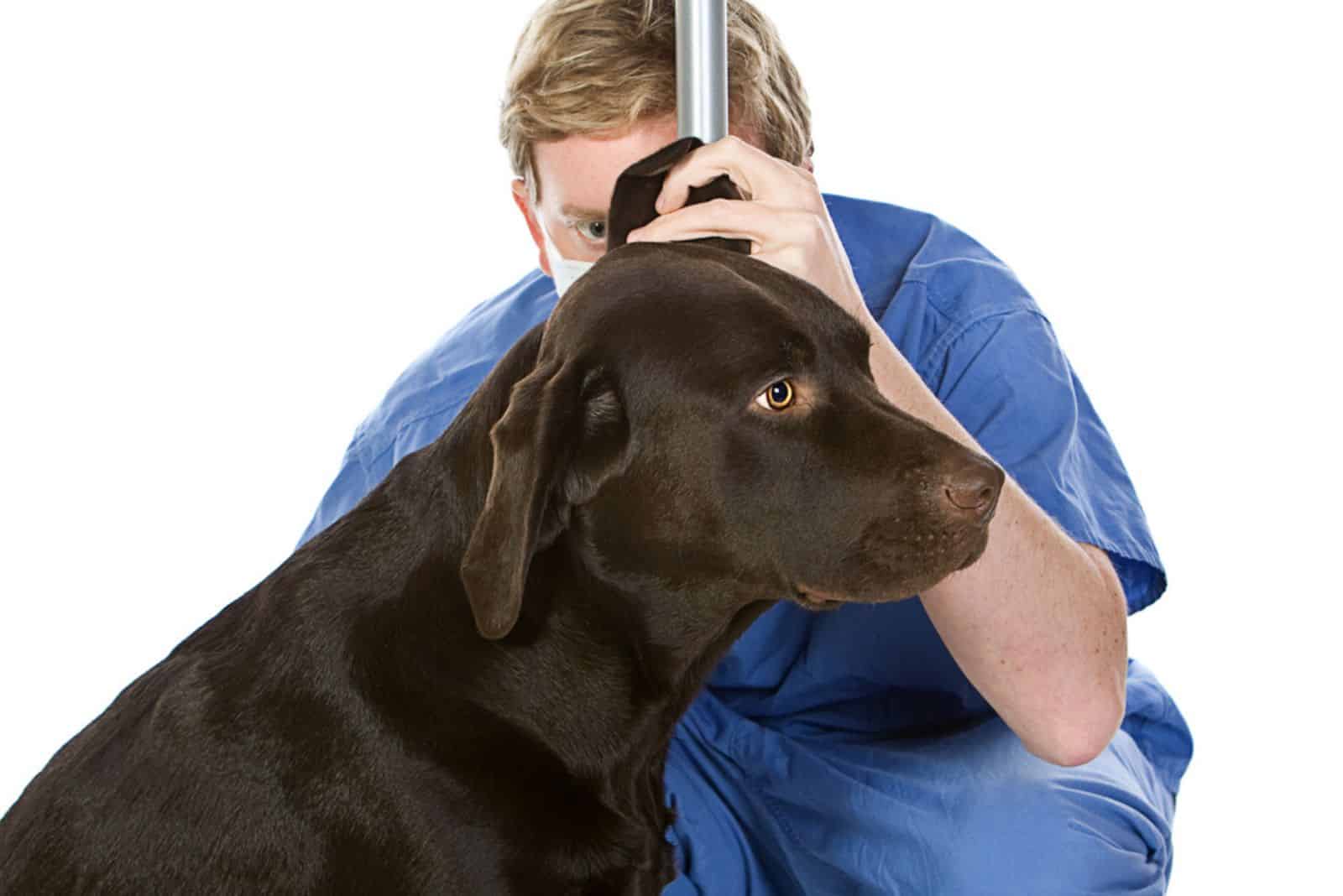
I wouldn’t let my dog be bothered by aural hematomas for too long, especially if it’s a bigger one. While they might look harmless, hematomas are painful for dogs, and they should be checked by a professional. Any experienced vet will quickly diagnose a hematoma, and prescribe your dog treatment.
Your vet will check the dog’s ear canal in case something is stuck in there. Foreign objects trapped inside the ear might cause hematomas as well as underlying ear infections.
If your dog has symptoms like a hot head or he’s in general distress, then you should immediately rush him to the vet.
The treatment depends on the hematoma, its size, its cause, and if it’s a chronic hematoma.
While drainage or aspiration is the most common solution for hematomas that happen for the first time, surgery is the only option for chronic hematomas. It’s the only way to prevent them from happening again.
FAQs

Yes, hot compresses should help with your dog’s aural hematoma. However, that’s not a long-term solution.
Most veterinarians recommend you put warm compresses on your dog’s ear hematoma. It should help with the pain and the inflammation. But, in order to fully remove the hematoma, you’ll need up to 6 weeks! No one has the time (nor your dog has the patience) to hold these compresses that long.
Until your vet finds the underlying cause of the hematoma, you can alternate between hot compresses, antiinflammatory meds recommended for dogs, and natural balms.
Massaging the hematoma should only be done if your vet says so. There’s really no point in massaging to get rid of the hematoma. Sure, applying oils that we mentioned earlier can help a bit, but that’s only in some small cases.
Don’t try to break up the hematoma by massaging it. The blood has nowhere to go! You can either drain it or let it reabsorb naturally. Massaging in order to make the hematoma go away is ridiculous.
Some hematomas are small, so dog owners don’t really realize they’re present. Thus, there’s a huge possibility they will go away on their own. However, that doesn’t mean they will.
If you notice your dog has a hematoma, don’t ignore it. Big hematomas normally don’t go away on their own. They should be checked by a professional.
In case you don’t address the hematoma and it does go away on its own, your dog is at risk for several issues, including the deformation of the ear flap, tissue scarring, tissue death, and ear canal blockage.
To Sum Up…
Now that you know how to treat dog ear hematoma at home, you have nothing to be afraid of.
Aural (or ear) hematomas are pretty common, whether they’re caused by a foreign body, a parasite bite, trauma, or a food allergy. The most important thing is to monitor your dog’s overall condition, and take him to the vet to figure out the reason behind it.
Your DVM should also be addressed if your dog is having recurring hematomas.
Leave the larger hematomas for your next vet visit, and try to solve minor ones with compresses, balms, and e-collars. If that still doesn’t work, the only solution is a surgical procedure.
Don’t worry – it’s really for the well-being of your dog.
